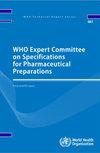Migration and Homing Behavior of Chum Salmon Tagged in the Okhotsk Sea, Eastern Hokkaido
Q3 Medicine
引用次数: 0
Abstract
Chum salmon (Oncorhynchus keta) are one of the most important species for commercial fisheries in Hokkaido in northern Japan. The Okhotsk coast in eastern Hokkaido is the principal area of salmon production in Japan. Commercial catches of chum salmon have been supported by intensive hatchery programs (Miyakoshi et al. 2013). In Hokkaido, returning chum salmon are fished in coastal waters mainly via set nets that are operated from September to December. Recently, coastal sea water temperatures in autumn have been higher than the historic mean. In years with high coastal sea water temperatures (> 20°C), it has been frequently observed that the peak timing of chum salmon landing was delayed and exploitation rates by coastal set net fisheries were low. In addition, high water temperatures might affect the distribution of chum salmon in coastal areas and the number of fish caught by each set net. In order to determine the effects of sea water temperature on commercial landings, the responses of migrating chum salmon to sea water temperature needs to be elucidated. To understand migration routes, depths, and temperatures experienced by returning chum salmon in the Okhotsk Sea, we caught chum salmon in the coastal waters, applied archival tags to them, and released them in late August or early September from 2016 to 2018. We report the outcomes of the tagging experiment for chum salmon in the Okhotsk Sea. From 5 to 7 September 2016, 28 to 30 August 2017 and 28 to 31 August 2018, tagging experiments for chum salmon were conducted in the Okhotsk Sea from the research vessel Hokuyo maru (237 tonnes, Wakkanai Fisheries Research Institute, Hokkaido Research Organization). At a total of 8 or 9 sites in each year, we visually counted the number of chum salmon and fished for chum salmon at night (Fig. 1). At each site, fishing lights were used, and chum salmon that appeared were fished with a lure with raw bait (a slice of squid or Pacific saury) on the hook. The captured chum salmon were anesthetized, tagged with an archival tag on the base of the dorsal fin, and measured for fork length and weight. After recovery from anesthesia, the tagged fish were released into the sea. At the fishing sites, the vertical distributions of the sea water temperature and salinity were measured using CTD (Seabird SBE9plus, Sea-Bird Electronics, Inc., Bellevue, WA, USA).北海道东部鄂霍次克海标记鲑鱼的洄游和归巢行为
鲑鱼(Oncorhynchus keta)是日本北部北海道商业渔业中最重要的物种之一。位于北海道东部的鄂霍次克海岸是日本鲑鱼的主要产地。大马哈鱼的商业捕捞得到了集约化孵化场计划的支持(Miyakoshi et al. 2013)。在北海道,回归的大马哈鱼主要是在9月至12月期间通过套网在沿海水域捕捞的。最近,秋季沿海海水温度高于历史平均水平。在沿海海水温度较高(> 20°C)的年份,经常观察到大马哈鱼登陆的高峰时间推迟,沿海套网渔业的捕捞率较低。此外,高水温可能会影响鲑鱼在沿海地区的分布和每套渔网捕获的鱼的数量。为了确定海水温度对商业着陆的影响,需要阐明洄游鲑鱼对海水温度的反应。为了了解鄂霍次克海鲑鱼洄游的路线、深度和温度,我们在沿海水域捕获了鲑鱼,给它们贴上了档案标签,并在2016年至2018年的8月底或9月初将它们放生。本文报道了鄂霍次克海大马哈鱼的标记实验结果。2016年9月5日至7日、2017年8月28日至30日和2018年8月28日至31日,在鄂霍次克海,由“北海道研究机构Wakkanai渔业研究所”的“Hokuyo maru”号科考船(237吨)对大马哈鱼进行了标记实验。每年总共有8到9个地点,我们目测地统计了大马哈鱼的数量,并在夜间捕捞大马哈鱼(图1)。在每个地点,我们都使用了捕鱼灯,出现的大马哈鱼是用鱼钩上有生饵(一片鱿鱼或太平洋刀鱼)的诱饵捕捞的。捕获的大马哈鱼被麻醉,在背鳍底部贴上档案标签,并测量叉的长度和重量。麻醉恢复后,这些被贴上标签的鱼被放入海中。在捕鱼点,使用CTD测量海水温度和盐度的垂直分布(海鸟SBE9plus,海鸟电子公司,Bellevue, WA, USA)。
本文章由计算机程序翻译,如有差异,请以英文原文为准。
求助全文
约1分钟内获得全文
求助全文
来源期刊
CiteScore
0.44
自引率
0.00%
发文量
0
期刊介绍:
The WHO Technical Report Series makes available the findings of various international groups of experts that provide WHO with the latest scientific and technical advice on a broad range of medical and public health subjects. Members of such expert groups serve without remuneration in their personal capacities rather than as representatives of governments or other bodies; their views do not necessarily reflect the decisions or the stated policy of WHO.

 求助内容:
求助内容: 应助结果提醒方式:
应助结果提醒方式:


